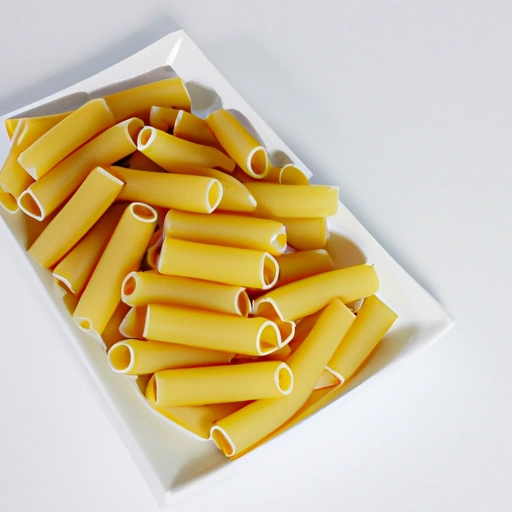Ziti
Description

Ziti is a type of medium-sized tubular pasta that is similar in appearance to penne, but often has a smoother surface and a square-cut edge. It is a popular choice in a variety of dishes, particularly baked casseroles and pasta salads. Ziti is traditionally made from durum wheat semolina and water, and it is a staple in many Italian and Italian-American cuisines.
Common uses
Ziti pasta is commonly used in baked pasta dishes, such as the classic baked ziti, which is similar to lasagna in its layering technique but uses ziti noodles instead. It is also a favorite in pasta salads, often mixed with fresh vegetables, cheeses, and a dressing, and served either warm or chilled. Additionally, ziti can be found in soups and stews where it provides a hearty texture.
Nutritional value
Calories
One cup of cooked ziti pasta, which is approximately 140 grams or 4.9 ounces, contains about 220 calories.
Protein
This same serving size provides roughly 8 grams of protein, essential for muscle repair and growth.
Fat
Ziti is low in fat, with a cup of cooked pasta containing approximately 1 gram of fat.
Carbohydrates
Carbohydrates are abundant in ziti, with a single cup serving offering about 43 grams, which provides energy to fuel your body's activities.
Vitamins
While pasta is not particularly high in vitamins, it does contain some B-vitamins, particularly if it is enriched pasta.
Minerals
Enriched ziti pasta may also contain iron and other minerals that are important for overall health.
Health benefits
As a complex carbohydrate, ziti can be part of a balanced diet, providing sustained energy. The protein content also contributes to satiety, and if whole-grain ziti is chosen, the increased fiber content can aid in digestion and promote heart health.
Potential risks
Overconsumption of ziti, especially if not balanced with vegetables and proteins, can lead to weight gain. Additionally, those with gluten sensitivity or celiac disease should avoid traditional ziti made from wheat.
Common recipes
Beyond the iconic baked ziti, this pasta is featured in a variety of dishes like ziti with sausage and peppers, ziti al forno (oven-baked with cheese and tomato sauce), and in cold pasta salads.
Cooking methods
Ziti is typically boiled in salted water until al dente, which takes about 10 to 12 minutes. It can also be parboiled if it is going to be further cooked in a baked dish.
Pairing with other ingredients
Ziti pairs well with robust tomato or cream-based sauces, as well as with vegetables like broccoli, spinach, and zucchini. It complements cheeses such as mozzarella, ricotta, and Parmesan, and is often combined with ground meats or sausage.
Summary
Ziti is a versatile and beloved pasta shape that is a fundamental component of many delicious recipes. Its historical significance and adaptability to various cooking styles and ingredients make it a favorite worldwide. Whether baked and layered in a casserole or tossed in a refreshing pasta salad, ziti provides a satisfying base that complements a wide array of flavors and culinary traditions.